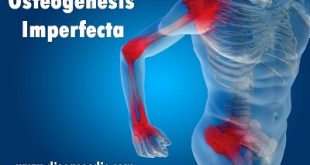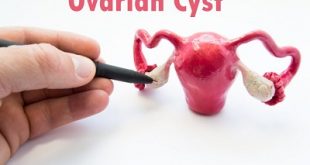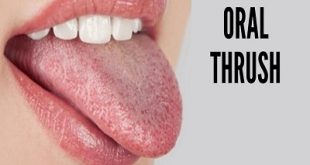What is Onycholysis?
Onycholysis refers to the physical sign of separation of the nail plate from the nail bed. Because of this separation, the portion of the nail plate that is not attached appears white. A greenish discoloration can sometimes be seen in onycholysis, and can represent concomitant Pseudomonas infection.
Pathophysiology
Nails with onycholysis usually are smooth, firm, and without inflammatory reaction. Onycholysis is not a disease of the nail matrix, but nail discoloration may appear underneath the nail as a result of secondary infection. When onycholysis occurs, a coexistent yeast infection is suggested. Treating primary and secondary factors that exacerbate onycholysis is important. Left untreated, severe cases of onycholysis may result in nail bed scarring.
Causes of Onycholysis
The cause of a person’s onycholysis varies widely. A person may experience an injury or repetitive trauma.
Simply tapping nails repeatedly for a long time can cause the nail to separate from the skin. Injuries such as slamming a finger in a car door or stubbing a toe may also cause onycholysis.
Some other typical causes include:
- Reaction to chemicals, such as nail polish, nail polish remover, or household cleaners
- Fungal infections, common in the feet
- Psoriasis
- Reaction to medication
If a person’s nails are detaching from the nail bed, it may be because of an underlying medical condition. If onycholysis cannot be explained by one of the more usual causes listed above, it may be one of the first symptoms of something more serious going on inside the body.
Health problems that can cause onycholysis include:
- A severe yeast infection
- Thyroid disease
- Vitamin and mineral deficiencies
Risk Factors for Onycholysis
Physical Trauma
Trauma may be caused by using blow dryers to dry nail paint. Filing the nails improperly may also loosen the nails and separate them from the nail bed with time. Tapping long nails on a keyboard or counter may also be a contributing reason for this nail condition.
Infections
People who have to spend a large portion of their day with hands immersed in water or using chemicals such as solvents and cleaners are likely to develop nail infections that could cause onycholysis.
Drug Side Effect
A person may also develop this nail condition as a side effect of treatment drugs such as tetracyclines, psoralens, fluoroquinolone antibiotics, chlorpromazine, and even oral contraceptives. The drugs, especially if taken long term, may create an unwanted side effect on the nails by causing a loosening of the nail from the nail bed.
Present Diseases
If a person is suffering from an existing disease, onycholysis may be a symptom present. Skin diseases such as psoriasis, dermatitis, pemphigus vulgarism, and porphyria cutanea tarda may cause nails to degenerate in this manner.
What are the signs and symptoms of onycholysis?
- Irregular border between the pink portion of the nail and the white outside edge of the nail when the nail has lifted from the nail bed.
- Larger portion of the nail is opaque, can be whitened or discoloured to yellow or green.
- Discoloration underneath the nail may occur as a result of secondary infection.
- Depending on the cause, the nail may collect thickened skin underneath the edge of its nail plate and the nail surface may become deformed with pits or indentations.
- It is usually painless as the separation occurs gradually. Pain may occur if nail is further detached from the nail bed as result of trauma or if active infection sets in.
Systemic Implications and Complications
The list of systemic disorders associated with onycholysis is extensive. These disorders include:
- Thyroid disease (hyper- and hypothyroidism)
- Connective tissue disorders (including lupus erythematosus and scleroderma)
- Diabetes mellitus
- Iron deficiency anemia
- Peripheral ischemia
- Yellow nail syndrome, as well as others
How to diagnose Onycholysis?
Diagnosing Onycholysis is simple and straight forward.
- To diagnose Onycholysis you must examine closely your fingernails and the toenails for nail plate separation, opacity and discoloration and effects the disease might have on the peripheral skin surrounding your nails and toes.
- If you feel that something is wrong but can’t make a clear diagnostic, you need to go see your doctor or physician who would look for and diagnose for other symptoms and search for other symptomatic signs of the disease such as skin appearance around your nails or the appearance of indentations in the surface or the color and shape of the nails.
- Doctors search for sign of rashes on the skin or even check for related symptoms linked to thyroid problems.
- If the diagnostic suspicious of your doctor leans towards fungal infection, some tissues from beneath your nail plate might be scraped out for further testing.
Treatment of Onycholysis
Treatment for onycholysis varies and depends on its cause. Eliminating the predisposing cause of the onycholysis is the best treatment. Onycholysis related to psoriasis or eczema may respond to a midstrength topical corticosteroid. Pulsed dye laser treatment was reported as effective for psoriasis-induced onycholysis in one small series, but caution is advised until more data are available regarding this intervention. Psoralen plus ultraviolet A (PUVA) treatment has also been reported as an effective therapy for psoriatic onycholysis. Note the following:
- Patients should avoid trauma to the affected nail, and keep the nail bed dry.
- Patients should avoid exposure to contact irritants and moisture (important).
- Patients should clip the affected portion of the nail, and keep the nails short.
- Patients should wear light cotton gloves under vinyl gloves for wet work.
Intralesional injection may be required for onycholysis associated with more severe psoriatic nail dystrophy. Note the following:
- Triamcinolone 2.5-5 mg/mL diluted with normal saline is injected into the proximal nail fold every 4 weeks in a series of 4-6 sessions.
- The proximal nail fold overlying the nail matrix is the ideal site for treatment of diseases that begin at the matrix (eg, psoriasis).
- A 30-gauge needle is adequate for medication delivery; a topical anesthetic may be used to reduce pain.
- Improvement should start after the initial series; continued injections depend on disease recurrence.
- For other nail changes associated with onycholysis (eg, oil drop sign of psoriasis, distal onycholysis, subungual hyperkeratosis), the ideal location for intralesional injection is the nail bed. The pain of this procedure necessitates the use of anesthesia. This problem can be overcome by injecting the lateral nail folds in an attempt to get medication to the affected area.
Medication
Use an antifungal medication if the onycholysis is caused by a fungal infection. Before your nail can grow back, the fungus and bacteria under the nail must be killed. After diagnosing this kind of infection, your doctor will prescribe an oral or topical antifungal medication to treat it. Take or apply the medication exactly as directed until a new, healthy nail begins growing in.
- Oral medications should be taken for 6-24 weeks depending on the severity and nature of the infection.
- Topical creams or ointments should be applied daily around the nail bed and are usually slow to produce results.
- Oral medications are generally more effective than topical ones, but carry additional risks such as potential liver damage.
- Follow up with your doctor after 6-12 weeks of treatment.
Preventing Onycholysis
Taking preliminary steps towards caring for your nails when the first signs of onycholysis show up, can help manage the condition better. Onycholysis caused by physical trauma can be avoided altogether and deterioration of the nail can be prevented even after its onset. Additional steps in the prevention of Onycholysis are as follows:
- Ideally nails should be kept short and the affected portion should be clipped away. The clipper should be used to trim the nail till the place it is reattached to the nail bed.
- The nail bed should be washed and dried regularly so as to flush out any infection that may gather in the nail bed.
- Contact with chemicals such as nail paint, solvents, detergents and enamel removers should be avoided.
- Vinyl or cotton gloves should be worn to protect the nails from deterioration if working constantly with chemical irritants.
- The cut nails should not be bandaged as bacterial infections may grow under the bandages and prove counter-productive.
- A drying agent like 3% Thymol in alcohol may also be prescribed by the treating health care practitioner and should be used each time the hands get washed.
- Medicine pills may be prescribed along with topical gels or creams to help treat the root cause of the condition. Medicines may be also required to control any secondary infection that flares up.
 Diseases Treatments Dictionary This is complete solution to read all diseases treatments Which covers Prevention, Causes, Symptoms, Medical Terms, Drugs, Prescription, Natural Remedies with cures and Treatments. Most of the common diseases were listed in names, split with categories.
Diseases Treatments Dictionary This is complete solution to read all diseases treatments Which covers Prevention, Causes, Symptoms, Medical Terms, Drugs, Prescription, Natural Remedies with cures and Treatments. Most of the common diseases were listed in names, split with categories.







